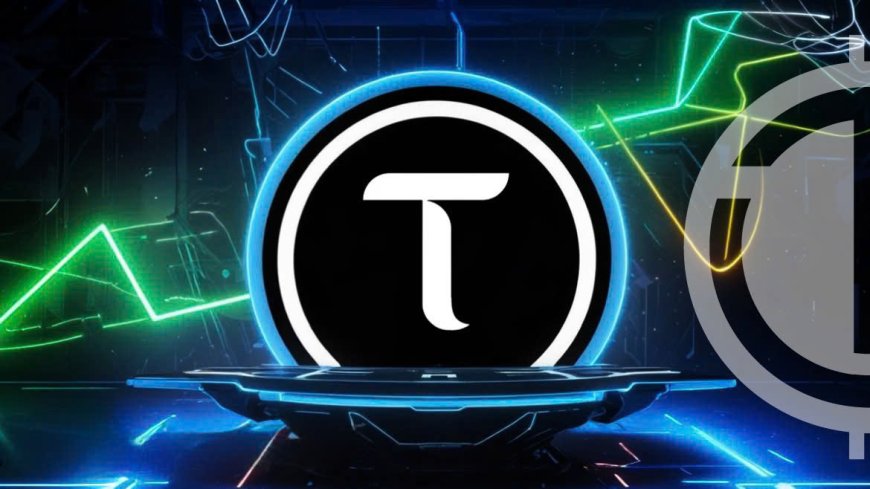How Taoshi is Revolutionizing Price Prediction in BitTensor’s Subnet 8
The blockchain industry is evolving rapidly, and projects like BitTensor are leading the charge by providing a decentralized protocol that incentivizes participation through machine learning and AI.

The blockchain industry is evolving rapidly, and projects like BitTensor are leading the charge by providing a decentralized protocol that incentivizes participation through machine learning and AI. One of the most significant innovations built on this protocol is Taoshi, a price prediction subnet focusing on financial markets. In this article, we’ll take a deep dive into how Taoshi, led by its founder Arash, is leveraging BitTensor’s platform, specifically in subnet 8, to revolutionize the world of financial forecasting. We'll explore the intricate details of how it works, why it's essential, and how it’s paving the way for future subnets in the ecosystem.
What is Taoshi?
Taoshi is a decentralized price prediction subnet that leverages BitTensor’s cutting-edge technology to forecast financial markets, specifically aiming at predicting Bitcoin's price movement eight hours into the future. According to Arash, the founder of Taoshi, the idea emerged as soon as he encountered BitTensor’s massive potential. He quickly realized the value of building a subnet that could accurately forecast price movements across multiple financial instruments, a complex challenge given the volatile nature of these markets.
Arash and his team at Taoshi are laser-focused on developing revenue-generating subnets, which is central to their strategy. Unlike some projects that focus on speculative growth, Taoshi is built with the clear intention of creating value through systems that can eventually lead to sustainable revenue streams.
The Functionality of Taoshi’s Price Prediction Subnet
Taoshi’s core innovation lies in its decentralized approach to price prediction using BitTensor’s platform. Financial markets are notoriously complex, with countless variables influencing price movements at any given time. Markets fluctuate between bullish and bearish trends, adding to the complexity. Instead of relying on traditional centralized models for price prediction, Taoshi employs a decentralized network where miners compete to create machine learning models for various trade pairs and conditions.
Here’s how it works:
- Every 30 minutes, miners receive a request to predict Bitcoin's price eight hours into the future.
- Miners who generate the most accurate forecasts are rewarded with BitTensor’s native cryptocurrency.
- The process is dynamic, with miners constantly adjusting their models to outperform their peers, which in turn creates a robust price prediction engine.
By incentivizing miners to develop and refine their models, Taoshi is building what could be considered one of the most comprehensive trading strategies ever developed. Rather than relying on a single entity or model, the decentralized nature of the subnet ensures that the best models rise to the top, driven by competition.
Supporting Miners and Validators: A Proactive Approach
One of Taoshi's key strategies is providing miners and validators with the tools they need to succeed. According to Arash, merely building the subnet and allowing miners to figure out the complexities themselves would delay progress. Instead, Taoshi takes a hands-on approach, offering resources, guidance, and infrastructure to ensure miners and validators can effectively contribute.
This proactive methodology accelerates development and enables the subnet to reach its ultimate goal—creating revenue streams sooner rather than later. By guiding participants in the subnet, Taoshi ensures that the system operates efficiently and delivers consistent, high-quality results.

Who Are the Key Stakeholders?
In Taoshi’s subnet 8, the primary stakeholders are:
- Miners: They compete to predict price movements and are rewarded based on their accuracy. The more accurate the prediction, the higher the reward.
- Validators: Their role is to ensure that the network remains in consensus. They, too, are incentivized with rewards for staying aligned with the network's goals.
- Subnet Owners: Taoshi, as a subnet owner, earns emissions for developing and maintaining the subnet. This setup aligns everyone’s incentives, ensuring that the network thrives through participation and competition.
Objective vs. Subjective Benchmarking
One of the most exciting aspects of subnet 8 is its objective approach to benchmarking miners. In the world of price prediction, miners' outputs can be easily validated by comparing their predictions against the actual price. This makes subnet 8 highly transparent and measurable—two critical factors for long-term success.
However, for other subnets, like those focused on natural language processing or other more subjective tasks, the validation process is not as straightforward. Arash points out that for subnets that deal with subjective data (e.g., solving complex geopolitical issues), determining which outputs are “correct” is much more challenging. This issue creates room for potential bias, where miners may overfit their models to meet validators' expectations rather than focusing on the best objective answers. Developing a flexible validation mechanism for such tasks will be one of the most significant challenges facing the BitTensor ecosystem as it grows.
The Role of Subnet Tokens in Network Growth
Subnet tokens are another critical element of the BitTensor ecosystem, particularly for delegators. These tokens, which fluctuate in value depending on market conditions and subnet performance, give delegators the power to influence which subnets receive emissions. This shift from validators to delegators in controlling emissions is seen as a positive development, one that fosters a more dynamic and accountable market.
As subnets like Taoshi demonstrate their ability to generate revenue and drive real-world value, they will likely capture a larger share of total emissions. This meritocratic system encourages innovation and competition within the network, rewarding subnets that provide tangible benefits.
Future Prospects for Taoshi and the BitTensor Ecosystem
Taoshi is laying the groundwork for a new wave of revenue-driven subnets, where success is measured not just by growth metrics but also by real value creation. Arash and his team are keen on expanding beyond price prediction, potentially exploring other areas where decentralized machine learning models could make a significant impact, such as natural language processing and AI-driven applications.
In the broader context, BitTensor represents an incentive protocol that could disrupt industries far beyond crypto and financial markets. By incentivizing participation and competition, much like decentralized finance (DeFi) has done, BitTensor has the potential to drive innovation in various domains, from decentralized exchanges (DEX) to smart contracts.
Conclusion
Taoshi is at the forefront of innovation in BitTensor’s decentralized network, providing a price prediction subnet that harnesses the power of competition, machine learning, and blockchain incentives. By focusing on creating revenue-driven subnets, Taoshi is setting an example for others in the ecosystem to follow. As BitTensor continues to grow, subnets like Taoshi will play an integral role in pushing the boundaries of what decentralized machine learning can achieve.
Source : @The Bittensor Hub.
















